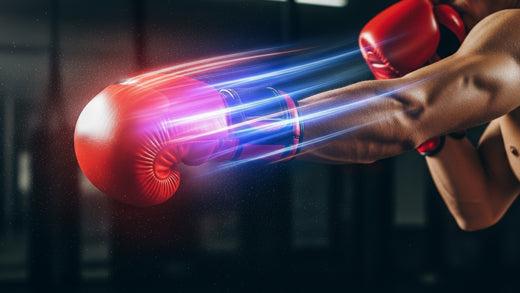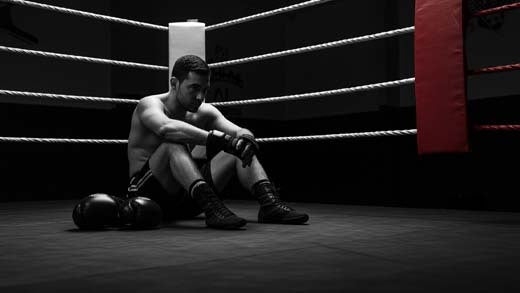Experienced heavy bag practitioners know there's nothing quite as exhilarating as standing before one with gloves on, feeling your adrenaline flow through your veins. However, when it comes to building or upgrading a training setup, one question always arises, whether to choose a freestanding or hanging heavy bag. Which option provides more energy release?
This decision requires more than simply selecting one or the other type of bag; it involves how you train, your space limitations, and what kind of power you want to develop. Let's go over all the factors so you can select a bag that best meets your training style and goals.
Understanding the Basics
Before we dive into the battle between a freestanding heavy bag and hanging heavy bag, let's address what each one brings to the mat.
Freestanding heavy bags feature sturdy bases filled with either sand or water for optimal training flexibility and can be moved freely around. Ideal for individuals who prefer flexibility when exercising or living in spaces without permanent installation options, the portable bike rack provides convenient exercise solutions without being permanently installed.
Heavy hanging bags, on the other hand, are typically suspended from either a ceiling or wall mount and designed to move naturally when struck, mimicking real opponent movements and providing training of power and precision skills for boxers.
If you’re new to heavy bags, you might want to check out Heavy Bag vs. Punching Bag: Which is the Better Choice for Your Workout? — It gives a clear breakdown of how different bag types serve unique training goals and what suits you best.
The Power Factor
When comparing a freestanding vs a hanging heavy bag, power absorption is a key difference.
Heavy bags that hang are made to take a beating. They can better absorb and spread force because they are attached to a ceiling or mount. This lets you hit hard and makes the fighting movement look more authentic. You have to change your footwork and timing because of the swinging motion, which helps you improve your rhythm, endurance, and accuracy.
Freestanding bags, while stable, tend to rebound faster due to their base. This can be an advantage for speed and combo training, but less ideal for raw power punches. If your goal is knockout strength or advanced boxing technique, the hanging bag might win this round.
For a deeper look at how to choose the right setup for your goals, How To Choose The Best Heavy Bag For Home Training walks you through ideal sizes, materials, and installation tips for both freestanding and hanging bags.
Space and Convenience
At this point in the debate about freestanding heavy bags vs hanging heavy bags, another element comes into play. Not everyone has access to an ideal training space with reinforced ceiling beams.
Freestanding bags provide unparalleled convenience. From setting them up in your garage to moving them outdoors or moving them indoors during bad weather conditions, freestanding bags make exercising effortless. No drilling required, simply fill the base and go! And unlike their stationary counterparts, freestanding bags make storing and repositioning them after workouts much simpler.
Hanging bags require more setup. You will require a secure installation location with sufficient ceiling height to allow a full range of motion. However, once installed, they remain compact and out of the way, so you have your floor free for footwork and movement drills.
So if you live in an apartment or rental, a freestanding bag may make more sense, but for an authentic boxing gym feel, hanging bags make sense.
If you’re struggling with limited room, check out Best Punching Bags for Small Spaces and Home Gyms — it highlights practical bag options for tighter setups and ways to maximize your workout area.
Training Style and Skill Level
Consider how you train when choosing between hanging heavy bags and freestanding ones.
-
For beginners, freestanding ones tend to be safer and simpler to operate compared to hanging ones; their steady swing allows for focused training sessions without accidental swinging in random directions.
-
Hanging bags provide intermediate and advanced athletes with the resistance and movement required to improve their timing, counterpunching and defensive skills.
-
Freestanding bags are great tools for cardio or fitness enthusiasts looking for high-intensity interval training, kickboxing cardio, or circuit workouts, without being limited by space limitations or height. Simply move it quickly around with no concern for size or height restrictions!
In short, freestanding is best for building endurance and speed; hanging provides more power and accuracy.
Durability and Maintenance
An appropriately cared-for hanging bag can last years with proper care, particularly one composed of real leather or high-grade synthetic materials such as polyurethane. Such materials tend to be less likely to tip over than their counterparts and last much longer.
On a more regular basis, however, freestanding bags require regular inspection. Over time, water or sand may accumulate on their base and render things less stable. The bag part can also wear out faster because it gets hit directly and doesn't absorb as much motion.
That being said, modern freestanding bags from well-known manufacturers have come a long way. They now have stronger shock absorption and bases that can handle powerful hits.
The Verdict
There isn't a clear winner between freestanding and hanging heavy bags; it all depends on what works best for you and your scenario.
If you want something light that you can easily move and set up, a freestanding heavy bag is a good choice. It's great for beginners, home use, and cardio conditioning. This method offers numerous advantages.
Hanging heavy bags provides an effective and immersive way of developing boxing skills and experiencing the gym environment. Made for serious training purposes, this piece can teach you to fight in real life.
At the end of the day, both can transform how you train. What matters most is finding something that keeps you on track, challenges you, and makes you push harder than before.
Frequently Asked Questions
1. Freestanding vs Hanging Heavy Bag: What’s the difference?
Freestanding heavy bags sit on the floor with a weighted base, making them easy to move and perfect for small spaces. Heavy bags are suspended from a ceiling or stand, giving a more authentic swing and realistic striking experience.
2. Can I perform all types of strikes on both bags?
Hanging bags handle punches, kicks, and combinations naturally. Freestanding bags work well for punches and light kick,s but can tip if struck heavily.
3. Which bag gives a more intense workout?
Hanging bags swing with your strikes, engaging stabilizing muscles and boosting power, endurance, and coordination. Freestanding bags are better for speed, cardio, and quick drills.




